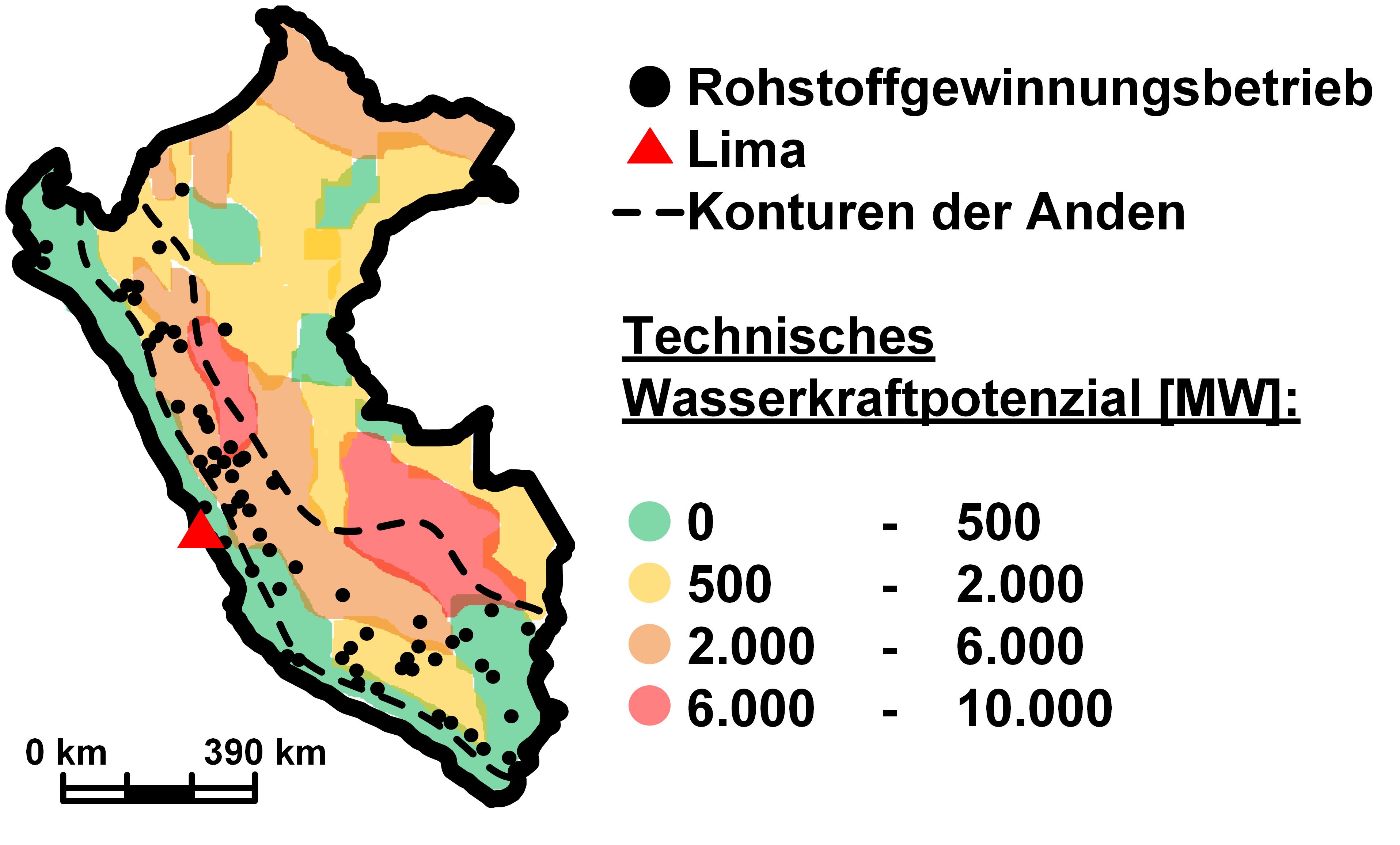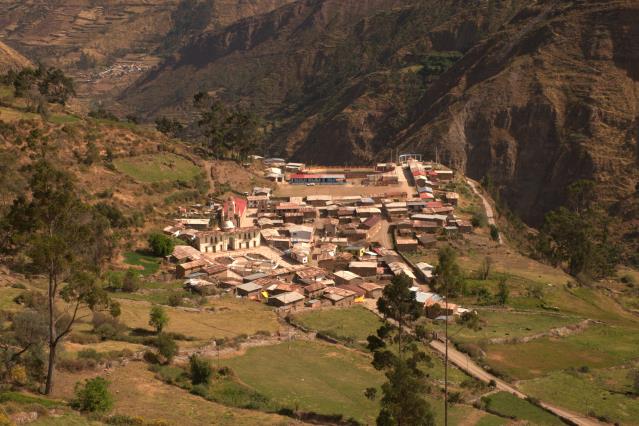Affordable and clean energy
Responsible consumption and production
Partnerships for the goals
Coordinator: RWTH Aachen University - Institute of Mineral Resources Engineering (MRE)
Contact: Yannick Feldmann
Address: Wüllnertraße 2, 52062 Aachen, Germany
Tel.: +49 241 80 97133
Email: feldmann(at)mre.rwth-aachen.de
Project partner:
- Technische Universität München - Lehrstuhl für Wasserbau und Wasserwirtschaft, München
- THEnergy - Dr. Thomas Hillig Energy Consulting, München
Project partner in Peru:
- ErgonPower S.A.C., Lima
Development of Concepts for the Utilisation of Hydroelectric Hydropower Potential of Raw Material Extraction Operations
Traditionally, the mining sector has relied on the fossil fuels of diesel, oil, coal and natural gas to meet its growing energy needs in the extraction and processing of raw materials. Against the backdrop of increasing greenhouse gas emissions, rising fuel prices and lower margins, concepts and technologies for harnessing and integrating hydroelectric hydropower potentials in open pit mines in Peru will be developed in the joint project SmartH₂OEnergy.
Hydropower in the Peruvian raw materials industry
Peru expects to double its electrical energy requirements from 2010 to 2020 - and to increase it fourfold by 2030. The rising demand is mainly due to the continuous growth of the mining industry, which accounts for 36% of total energy consumption in Peru (status in 2015). Hydropower has traditionally been of great importance in Peru as an inexpensive and reliable source of energy. However, despite the great potential for technical expansion, in recent decades its share of national electricity generation has fallen drastically due to subsidies for natural gas production in the Amazon region. In this context, above-average growth in the mining industry's energy requirements could, via the targeted use of hydropower, lead to an increase in the share of hydropower in Peru's electricity mix and the tapping of as yet unused potential. The Andean region in particular, where many mines are located, has a high potential for hydropower (Fig. 1).

In the joint project SmartH₂OEnergy, concepts will be developed that enable Peruvian raw material extraction operations to exploit hydroelectric hydropower potential. The aim is to record and investigate the techno-economic potentials and possible uses of the following areas of application:
- Process water in medium and large raw material extraction operations
- Natural surface waters near mining operations
- Above-ground mine water released by raw material extraction processes
Depending on the technical possibilities and factors such as cost-effectiveness and sustainability, concepts for variable use cases in raw material extraction will be developed.
The supply of raw material extraction operations with local hydropower will relieve the burden on power grids, expand the required infrastructure and consequently reduce the associated interference with nature. Through corresponding adaptation of raw material extraction operations, the regional supply of electricity from sustainable sources will be ensured beyond the duration of the project.
Development of concepts for the utilisation of hydroelectric hydropower
Within the framework of this joint project, a comprehensive solution approach with specific application concepts for the exploitation of hydroelectric potentials in raw material extraction will be developed for the first time. Based on the results and decisions of the previous definition project, the integration of hydropower into the above-ground raw material extraction process will be planned in detail in the joint project. This includes, among other things, the exploration, mining and subsequent use phase of raw material extraction.
The central question of the project is how, in raw material extraction, the maximum hydropower potential can be tapped and optimally utilised. For this purpose, an examination will first be done to determine how hydroelectric energy can be obtained economically in existing operations. Subsequently, an investigation will be carried out to identify how operations can be adapted in terms of planning and designed specifically for hydropower use. The available technologies for the production of hydroelectric energy will be selected according to suitable criteria and the achievable effect evaluated.
Although the solutions developed will be simulated and validated in the case of Peru, the focus will also be on the transferability of the concepts to other regions so that the same positive effects could be achieved in other locations.
Added value in Peru and beyond
SmartH₂OEnergy is a joint project of the Chair of Hydraulic Engineering and Water Management (WB) of the TU Munich, THEnergy and the Institute of Mineral Resources Engineering of RWTH Aachen University, as well as Ergon Power from Peru. The project is based on intensive cooperation between the group partners from science and industry in Germany and Peru. Another essential project partnership is the close involvement of the local Peruvian municipality of St. Catalina, about 100 km northeast of Lima, which is in the direct sphere of influence of the mine operator. In addition, the involvement of Peruvian universities in the field of mining sciences is being targeted in order to be able to react to country-specific problems, to address innovative topics in teaching and research and to ensure a permanent exchange of information between industry and science between the countries.

The identified application potential for existing concepts of hydropower utilisation as well as corresponding integration work should be disseminated in the sense of sustainable development, while newly developed concepts and systems are to be patented. The knowledge about the area of application and the limitations of the hydroelectric utilisation of hydropower potential in raw material extraction operations gained in the project can create a new market for innovative SMEs. In particular, the methodology and the area of application of hydropower will be covered for the entire lifetime of a raw material extraction site (from exploration to reuse), so a large group of users will be addressed. In terms of short-term benefits, the project will in particular have a positive impact on the energy balance, sustainability and cost-effectiveness of resource extraction in off-grid areas.
